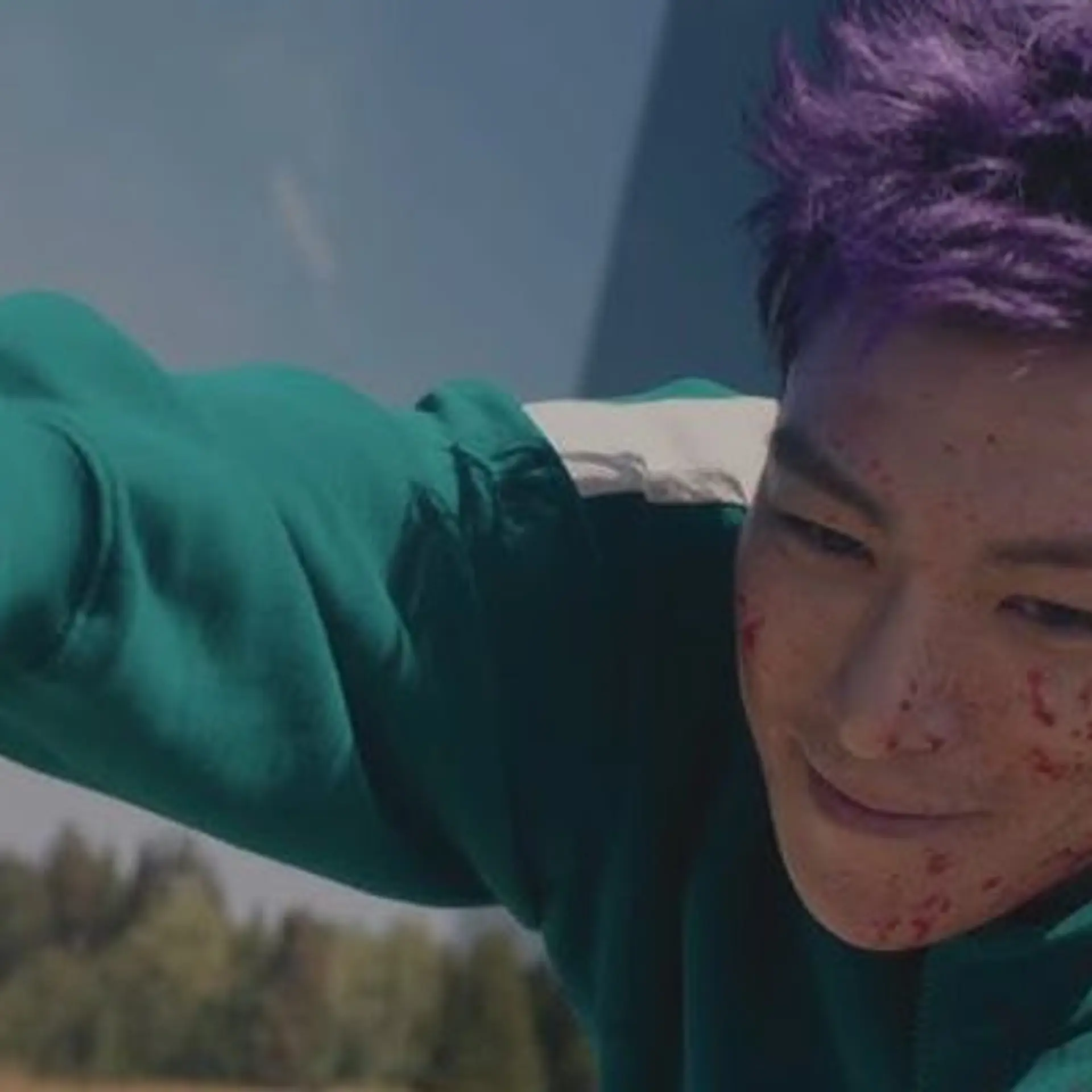Positivity, patience, perseverance: pandemic resilience tips from the Akanksha artists
In our second photo essay on the online art exhibition Akanksha 2020, we showcase a range of creative works along with curator and artist insights.
Launched in 2014, PhotoSparks is a weekly feature from YourStory, with photographs that celebrate the spirit of creativity and innovation. In the earlier 495 posts, we featured an art festival, cartoon gallery, world music festival, telecom expo, millets fair, climate change expo, wildlife conference, startup festival, Diwali rangoli, and jazz festival.
Artist and curator Shyamala Ramanand’s annual art show, Akanksha is being held entirely online this month (see Part I of our photo essay here). See also our coverage of the 2019 edition at Karnataka Chitrakala Parishath. One of Shyamala’s earlier exhibitions was titled 50 Shades of Black and White (see our photo essay here).
Titled Akanksha Art 2020: Online Women’s Group Show, the artist lineup includes Ambica V, Anagha Deshpande, Asha Vivek, Bijee Thomas, Bipasha Samanta, Christine Borgohain, Malini Menon, Mitali Mishra, Neetha Prabhu, Pramila Das, Priya Ramanathan, Sana S, Shaleena Nair, Shana Gokul, Sharmila P, Shobha Iyer, Shobha Shanbagh, Tiby Manu, Vedha Sreeram, and Veena Devagiri.

Shyamala Ramanand
“As the coronavirus forces us to endure an unprecedented time of distant social contact, somehow art can remind us and assure us of our interconnectedness. This has helped many artists to stay afloat,” explains Shyamala Ramanand, in a chat with YourStory.
The path of “tech-propelled art” was first recommended to her during the 2019 edition of her show, by the guest of honour – Sanjay Sahay, Additional Director General of Police, Karnataka Police Computer Wing. “Personally, this was a moment of calling to go digital,” Shyamala says.
There were tech challenges in moving from a physical to digital space. “Many artists have shied away from technology all these years, and this transformation was indeed hard,” she recalls.
“But the opportunity was that once the option of going digital opened up, we realised that technology has indeed made the world much flatter. Distance and time have no bearing now. Anyone can view your creations now,” she adds.
She advises artists to learn to adapt to technology as part of their learning process. “It is now part of an artist’s life. Our artists had to be literally taught to navigate their way through the website itself to search for their artworks,” Shyamala explains.
“Technology has suddenly become a big boon as art classes are flourishing like never before. Art teachers can get students from across the planet now, due to the online push from the pandemic,” she adds. The digital transformation can be actually felt like never before.
“So why stay behind? At Akanksha, we help build your artistic realisations. So don’t wander, just come to us,” Shyamala urges artists.
Tiby Manu
“Art is a blessing which can help people to cope in these dark times of COVID-19. Art can also act as a way of expressing ourselves and staying socially connected though we are keeping physical distance,” explains Tiby Manu.
She was earlier in the banking industry, and then switched to her childhood passion, art. She joined art classes in 2006. “Art is a continuous journey and not a destination. I have taken only the first step, a baby step in my journey,” she jokes.
Art helps draw attention to mental health during these times of isolation and social stigma. “Through art, we can also pay tribute to our champion warriors – the healthcare workers who are on the frontline of the pandemic,” Tiby adds. Art can restructure the mood and create a positive vibe among all stakeholders in society.
The pandemic has brought people closer and made them appreciate the real essence of our loved ones she says. Having extra time along with observation skills and creativity has shown her a new horizon, despite some challenges in procuring materials.
For the Akanksha exhibition, Tiby prepared artworks such as The Rise of Buddha, Harmony of Colours, An Eventful Day, Florescence, and Tale of Two. The reflect divinity, bliss, serenity, calmness and connection.
“The need of the hour is to develop a very passionate, perseverant, and strong mindset to reflect and rebuild,” she advises aspiring artists. Umpteen opportunities are opening up through social and digital platforms, to showcase art and connect to other artists.
“Network and explore more, this will help to learn, earn and grow. This is the time to do things that are postponed often, such as to learn and master skills,” Tiby recommends. Passion and persistence will help prevail in the long journey ahead.
Christine Borgohain
“Much of our social life has come to a standstill, resulting in severe anxiety, depression and other emotional issues. Depression is not easily recognisable, emotions are hidden even behind a smiling face,” Christine Borogohain cautions.
She was earlier a software engineer and an officer in the Ministry of Indian Railways, and began taking up art seriously ten years ago. Her works are in acrylic, oils, and black and white portraiture, with charcoal being her favourite medium.
Portraiture calls for attention to the minutest of details, and elicits appreciation and excitement from audiences. Something which would have otherwise gone unnoticed is now easily recognisable due to depiction via art.
“This is one such way I feel art can unearth problems being faced by humanity, by playing a subtle role in social issues. Besides, it is therapeutic to the artist as well,” Christine explains.
She is a new mother, and the lockdowns gave her time to create more art. For the Akanksha exhibition, she prepared works on nature and wildlife, sometimes inspired by photographs. “Painting nature depicts my yearning to be able to move about freely once again amidst nature, and satisfies my imagination of what I am missing,” she says.
“I feel one can never master art. The more you create the more you realise that there is so much more to learn,” Christine explains. New forms like miniature art call for different mediums and methods, for example.
She used to find ball pen art very difficult, as there is no room for corrections. “But once I started using the medium, I created some of my best miniatures with a ball pen. Art has somehow been all about shedding inhibitions, taking it as a challenge, and trying something new. I hope art can provide similar experiences to other artists as well,” Christine adds.
“Every artist should look at enhancing their skills at this time,” she suggests. Art should come from a passion for the subject, not just to impress audiences. During the pandemic, artists should channel their learnings and feelings into art.
Priya Ramanathan
“The entire world has been stressed due to the pandemic. Many firms have shut down or laid people off, while others are not paying salaries. Many people in India are trying to make both ends meet,” Priya Ramanathan observes.
Due to anxiety, worry and boredom, even simple tasks like eating and sleeping properly seem difficult. Creative hobbies help keep calm and be occupied, while also relieving stress.
“Art has a great way to make one feel free. The pleasure in creating an art is immense,” she adds. She started as an engineer, and now conducts workshops and art classes from her art space ‘Hues & Tones Art Studio’ in New Thippasandra, Bengaluru.
Many art fundraisers for COVID-19 relief have been organised across the world, with COVID-19 themed artworks displayed for sale. “A lot of artworks have been made to create awareness about social distancing and the necessity to wear a facial mask,” Priya says.
“A great deal of adaptation is necessary to move with the changing times,” she adds, pointing to the rise of online art shows and workshops as examples. There were challenges, though, for students in getting art supplies, digital devices, and stable internet connections.
“Many students were not comfortable with online classes as they wanted the personalised attention of a face-to-face class,” Priya says. However, she managed to conduct online classes in sketching, mandala, and watercolours.
Some art shows she was supposed to participate in have been postponed to next year. The pandemic made her pause and analyse her priorities. “I was able to spend more time with my family than before. It has created a sense of appreciation in me for the normal things we used to take for granted before the pandemic,” she adds.
Online forums share art news, competitions and challenges, and help keep balance in life. “Art refreshes my mind and give me peace, as I do not think of anything else which painting. In difficult times like this, art has been a great help and support for me,” Priya enthuses.
For the Akanksha exhibition, she prepared an alcohol ink work titled Joy. She advises artists to develop online skills for displaying art and teaching art lessons. “Learn and practice more. Hone your skills and be hopeful that things will get better,” she sums up.
Vedha Sreeram
In these tough times, art helps de-stress people both by practicing and learning art and by attending online art shows and talks, according to Vedha Sreeram. She is an engineering graduate, IT professional, teacher and artist, specialising in mandala art. Patterns and symmetry are widely perceived as a form of relaxation.
Art helps people discover themselves and connect to others. But the increased screen time and absence of direct human connections during the pandemic calls for extra planning, according to Vedha. The digital medium is slowly gaining prominence alongside galleries and exhibitions.
For the Akanksha exhibition, she prepared works in mandala style such as Blossoms, Bright Fall, and Golden Harvest. They convey emotions of brightness, positivity, and abundance.
“Art is a path to self discovery. Digital or otherwise, hard work and continuously experimenting and pushing the boundaries will define one’s signature style and form. This will help us connect well – both inside and outside,” Vedha advises aspiring artists.
Artists have to adapt to the tectonic shifts in the world, and developing a positive mindset to challenge conventional norms. Media coverage of art and artists also gives the community a lot of support, she emphasises.
Bijee Thomas
“Art has the ability to reduce stress by expressing your creative side and getting in touch with your inner feelings. It trains you to concentrate on details and pay more attention to your environment. In this way, it acts like meditation,” says Bijee Thomas.
Viewing art relieves mental exhaustion. Art develops imagination, innovative thinking and creativity even for those who are not full-time in this field.
“Art causes people to experience joy. Art can allow us to not just understand ourselves, but to understand each other at a deeper level,” she adds. Before becoming a full-time artist, she was an assistant professor in an engineering college.
In these tough times, positivity helps people move ahead. Unfortunately, art is considered by some to be a luxury, and the industry has been impacted adversely by the pandemic. Bijee’s in-person coaching classes have come to a halt as a result, but have moved online.
She exhibited oil and acrylic paintings such as Ruffling Greylag Goose for Akanksha 2020. “I get immense pleasure while creating realistic wildlife paintings. Complexities and fine details of fur and feathers excites me,” Bijee enthuses.
She advises aspiring artists to try their best instead of comparing themselves with other artists. “Practice regularly and push your limits with each painting. Perfection and success will eventually come,” she suggests.
Pramila Das
“The pandemic has made us all feel helpless. Humanity had taken all the luxuries of life’s gifts for granted, getting totally lost in busy lives, ignoring all the important things, and de-prioritising our environment, our personal lives, relationships and families,” Pramila Das laments.
Art can help the world come together as one, overcome fear and stress, spread safety messages, and change misconceptions and perceptions. As a profession or hobby, art can be a source of solace, and channelise people’s creativity, Pramila adds. She has a background in life sciences and was in the business world for 16 years before taking up art full-time in 2015.
“Initially the total lockdown was a jolt for most of us,” Pramila recalls. Exhibitions and client meetings were cancelled due to anxiety and fear. Death scoreboards and stories of acquaintances succumbing to the disease did the rounds.
Pramila started introspecting, seeking spiritual solace, looking for hope, and understanding what older generations did in times of crisis. “I joined a few artist friends to fund and help less-privileged people find food and shelter for a few months,” she says.
She also fed birds and street dogs who no longer had food when restaurants closed down. “This gesture really gives a huge sense of satisfaction and happiness,” she recalls. She began to calm down after two months, and focussed on opportunities such as quality time for family bonding and fresh creativity for art and online education.
The Akanksha exhibition has helped artists achieve some of their goals and tide over the crisis, she gratefully says. Pramila prepared works based on Mysore art paintings, which are known for their elegance, muted colours, attention to detail, and feelings of devotion and humility evoked in the viewer.
“Aspiring artists can use this crisis time to build values like patience, tolerance, and mental strength to stay afloat. They should learn new skills, and also impart artistic knowledge to others for free,” Pramila advises.
Anagha Deshpande
“Art is a visual expression of one’s feelings. Art can heal and brighten up people’s fast-paced life which has suddenly come to a halt due to the pandemic,” says Anagha Deshpande.
Her artworks for the Akanksha exhibition represent “visual poetry” of her philosophical feelings. The overall message is of hope and positivity. “Art was a great relief and had a soothing effect on hearts and minds during the lockdown,” she says.
“Art is more than a livelihood. Artists need to speak up their mind and help tackle the crisis. They need to upgrade their knowledge of computers and digital platforms,” Anagha emphasises.
She advises aspiring artists to show love for science, music, poetry and literature, and explore and experiment. “Have faith in yourself, a breakthrough is there in every artist’s life. Be positive and move ahead,” Anagha urges.
Shana Gokul
“Among many things, art is also a healer. It can relax and soothe you. In this time of crisis and isolation, that role of art becomes even more critical in our lives,” Shana Gokul explains. Art provides a release to anxieties and frustrations, and helps reflection and engagement.
Shana is a computer engineer by profession and had a stint at ISRO in projects related to GSLV launches. She is now a full-time artist, and has exhibited at venues and festivals ranging from Venkatappa Art Gallery to Chitra Santhe.
“I have a tendency to always see the glass as half full. I am one of those who always try to find the silver lining in every cloud,” she explains. “This crisis made me realise how privileged some of us are and how we should use it as a means to help others,” she adds.
She worked with BBMP to set up the isolation center in her apartment campus to take care of COVID-19 patients. This was especially important when the hospitals were running out of beds.
Shana participated in an online international watercolour exhibition organized by Sunil Linus De. For the Akanksha exhibition, she showcased verdant greenery and expansive landscapes.
“The pandemic is an opportune moment in human history to refocus our efforts to revitalise nature and allow it to bloom in all its glory,” Shana emphasises.
She advises aspiring artists to develop perspective both in technique and outlook. “These are surely tough times, but they are also great opportunities to gain unique perspectives of life,” she says.
“That will help you become unique and original because no one else sees what you see,” Shana adds.
Now, what have you done today to pause in your busy schedule and truly explore your creative core?

















See also the YourStory pocketbook ‘Proverbs and Quotes for Entrepreneurs: A World of Inspiration for Startups,’ accessible as apps for Apple and Android devices.
Edited by Suman Singh











